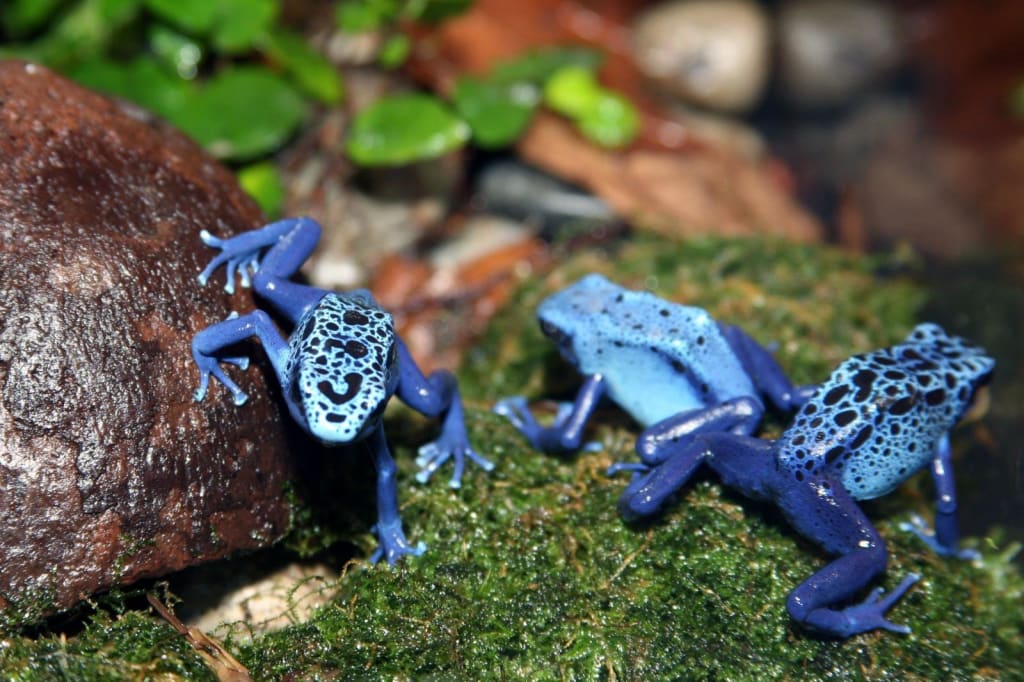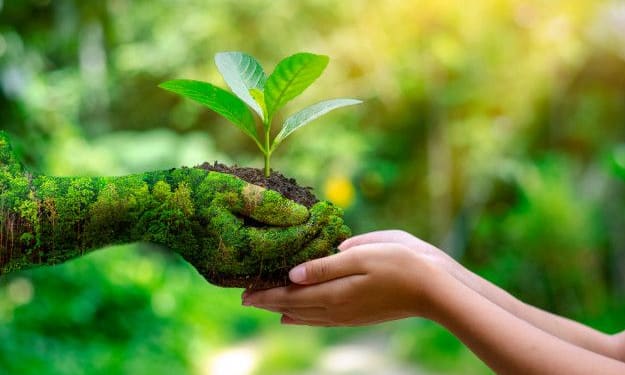
There are no blue tigers. No blue bats, blue squirrels, or blue dogs Even blue whales aren't that blue. Animals come in almost all colors, but blue seems to be the rarest. But the best part is that when we find a blue animal, it looks great. Nature can't handle blue. To understand why this is so, we go through evolution, chemistry, and beautiful physics. But first, we need to understand why animals have any color at all, and to do that, we need to go look at some butterflies. Because butterflies are amazing, and if you don't think so, you're wrong. This is Bob Robbins. He is the curator of butterflies at the National Museum of Natural History in Washington. Butterflies are amazing. Make no mistake. They are a group of moths that have evolved to be active during the day, and being active during the day gives you an advantage: you can use light to communicate.
You probably realize this, but of all the insects, butterflies have the most vibrant and detailed patterns. And for good reason: the colors of a butterfly's wings convey messages like "I'm poisonous" or "I'm male, and this is my territory," but not all butterfly colors are created equal. When we zoom in on a butterfly's wing, we see colors coming from small scales. In fact, this is how moths and butterflies get their scientific names. Oranges, reds, yellows, and browns—these scales contain pigments, organic molecules that absorb all colors except what we see. Black scales absorb all colors. Animals, from butterflies to birds to you and me, do not make these pigments from scratch; they are made from ingredients in our diet. You might know this from flamingos: They're born grey but turn pink thanks to pigments called carotenoids in the crustaceans they eat. So when it comes to these colors, you are what you eat. But not so with blue. The blue is different. If you move the camera, you will see the color change as you move the camera. It does. It's like a hologram. This is because these butterflies have no blue pigment. Wait, they're blue, but not really blue? This is correct! Yes. You're lying to me, butterflies! These are blue morpho butterflies, perhaps the most beautiful butterflies. I mean… They made it a butterfly emoji. The blue color is not pigmented. The blue comes from the shape of the wing scale, and when I found out how it works, it blew my mind. When we zoom in on the scale of the blue wing, we see these little ridges.
If we cut across the scale and look more closely, we can see that these edges are shaped like little Christmas trees. The arrangement of the branches gives Morpho's wings their blue color. When light enters, some of the top surface bounces off. But some of the light is transmitted to the layer and reflected from the lower surface. For most colors of light, the waves reflected from above and below are out of phase; they decay, and the light is removed. But blue light has exactly the right wavelength; the reflected light waves are synchronized, and that color reaches the eye. This hall of mirrors allows only blue light to escape. There's even a pigment in the bottom that absorbs stray red and green light to make the blue even purer. That's how we get that gorgeous iridescent blue. The microscopic structure of the wing itself This is all because of the way light bends as it passes from air to another material. So if we fill all those little voids with something other than air, like alcohol, the blue disappears. Technically, it "changes the refractive index", but in English, it means that the blue light is no longer bent in the right direction. The microscope light filter is broken. Until the alcohol evaporates. And the color is coming back. But these butterflies live in the rainforest. You'd think they'd lose their color if they got wet, right? Well, look at this. These wing scales are made of a material that is naturally waterproof. How about this blue jay feather? When we look through it, the color disappears completely. There is no blue pigment. Each quill contains light-scattering microscopic beads arranged to block all but blue light. Unlike the highly ordered structures found in butterfly wings, these feather structures are more disordered, like foam, so instead of the color changing as you move, the color is more uniform from all directions. Peacock tail feathers? Again, it's the shape of the pen, not the pigment. But the light-reflecting structures here are more ordered, like a crystal, so it's brighter from certain angles.
There's even a monkey. Oh, let's keep it PG! Even color is created by adding and subtracting light waves due to skin structures, not pigment. And yes, even your blue eyes are colored by structures, not pigments. Outside the ocean, the bluest living things almost exclusively use microscopic structures to create their colors, and each one is slightly different. No vertebrate, bird, mammal, or reptile that we know of produces blue pigment in its body. In fact, only one known butterfly has cracked the code to create true blue pigment. Blue pigment in nature is incredibly rare. But so far, there is one known exception, and they are called olive wings here. They developed a blue pigment. They are not very common, and we don't know much about them, and I don't know about any other blue pigment. This is a very special butterfly. Why is almost all natural blue a structure and not a pigment like everything else? I asked this question to several color scientists, and here's their best theory so far: At some point, birds and butterflies developed the ability to see blue light. But they have not yet developed a way to paint their bodies with this color.
But if they could, it would be like the early Beatles Sgt. Pepper's. It meant new ways to communicate and survive. Creating a blue pigment out of nothing would have required the invention of new chemistry, and that recipe could not be incorporated into someone's genes. It was much easier for evolution to change the shape of these bodies, at least ever so slightly, at the most microscopic level and create blue using physics instead. They solved a biological problem with technology. What I love about this is that these colors have fascinated the curious for hundreds of years. After looking at peacock feathers through one of the first microscopes in the 17th century, Robert Hooke wrote, "These colors are simply wonderful." Even Isaac Newton noticed that there was something unusual about these blues, and scientists have been studying them ever since. Not only because the science is interesting but also because it is beautiful.
About the Creator
Durga Prasad
My "spare" time is spent creating for myself and writing for others.





Comments
There are no comments for this story
Be the first to respond and start the conversation.